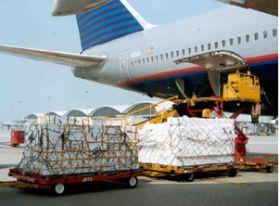
The International Air Transport Association (IATA) has released data for global air freight markets showing that demand, measured in freight tonne kilometers (FTKs), increased 0.1 per cent in March 2019, compared to the same period in 2018.
While this is a significant improvement on the 4.9 per cent contraction in February, in seasonally adjusted terms, demand is still down 1.5 per cent over the past year.
Freight capacity, measured in available freight tonne kilometers (AFTKs), rose by 3.1 per cent year-on-year in March 2019. Capacity growth has now outstripped demand growth for 11 out of the last 12 months.
Demand for air cargo continues to face significant headwinds, the IATA said in a statement: global trade volumes have fallen by 1 per cent over the past year; global economic activity and consumer confidence continue to weaken; and the export order component of the global manufacturers Purchasing Managers Index (PMI) has indicated falling global export orders since September 2018.
Industry confidence regarding the outlook, however remains relatively upbeat with only 13 per cent of respondents from IATA’s Business Confidence Survey expecting to see a decrease in freight volumes in 2019 compared to 2018.
“Year-on-year demand for air freight edged back into positive territory in March with 0.1 per cent per cent growth,' said Alexandre de Juniac, IATA's director general and CEO. 'After four consecutive months of contraction, this is an encouraging development. But the headwinds from weakening global trade, growing trade tensions and shrinking order books have not gone away,”
All regions reported year-on-year demand growth in March 2019, except Asia-Pacific which contracted, the IATA said.
Asia-Pacific airlinessaw demand for air freight shrink by 3.4 per cent in March 2019, compared to the same period in 2018. This was a significant improvement from the 12 per cent decline in growth from the previous month. Weaker manufacturing conditions for exporters in the region, ongoing trade tensions and a slowing of the Chinese economy impacted the market. Capacity decreased by 1 per cent.
North American airlinessaw demand increase by 0.4 per cent in March 2019, compared to the same period a year earlier. The recent easing of growth is partly due to a slowing of US domestic economic activity in the later part of 2018 and falling global trade volumes. Despite this, new export orders are rising which would support air cargo growth. Capacity increased by 2.6 per cent over the past year.
European airlinesposted a 3.6 per cent increase in freight demand in March 2019 compared to the same period a year earlier. Given the weaker manufacturing conditions for exporters in Germany, and uncertainty over Brexit, March’s performance represents a positive outcome. Capacity increased by 6.4 per cent year-on-year.
Middle Eastern airlines’freight volumes increased 1.3 per cent in March 2019 compared to the year-ago period. Capacity increased by 3.8 per cent. A clear downward trend in seasonally-adjusted international air cargo demand is now evident with weakening air freight volumes to/from North America and to/from Asia Pacific contributing to the softer performance.
Latin American airlinesexperienced an increase in freight demand growth in March 2019 of 3.6 per cent compared to the same period last year and capacity increased by 16.9 per cent. The emergence of the Brazilian economy from recession is supporting a resurgence in air cargo demand. Nevertheless, ongoing economic and political uncertainties in various parts of the region continue to present challenges for the industry.
African carriersposted the fastest growth of any region in March 2019, with an increase in demand of 6 per cent compared to the same period a year earlier. Seasonally-adjusted international freight volumes are lower than their peak in mid-2017; despite this, they are still around 30 per cent higher than their most recent trough in late-2015. Capacity grew 15.2 per cent year-on-year.



